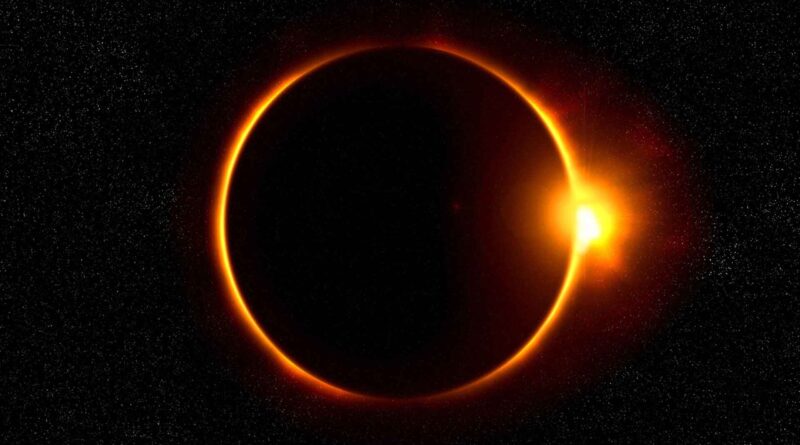Solar eclipse: Eye health warning
Critical Eye Health Warning You Need to Know
As celestial events capture public imagination, a solar eclipse brings with it a serious eye health warning that many people underestimate. The mesmerizing spectacle of the moon passing between Earth and sun presents unique dangers that can result in permanent vision loss if proper precautions aren’t taken. This eye health warning isn’t exaggerated—viewing a solar eclipse without adequate protection can cause solar retinopathy, a condition where the sun’s radiation burns delicate retinal tissue, often without immediate pain to signal the damage occurring.
Understanding the Danger: Why Eclipses Threaten Vision
The Deceptive Nature of Eclipse Viewing
During a partial solar eclipse or the partial phases of a total eclipse, the sun’s visible surface isn’t completely covered. While the overall light level decreases, the intensity of invisible infrared and ultraviolet radiation remains dangerously high. The reduced brightness creates a false sense of safety, causing people to stare directly at the sun for longer periods than they normally would—precisely when the eye’s natural protective mechanisms (squinting, pupil contraction, discomfort) are less likely to activate.
The retina lacks pain receptors, so damage can occur without any sensation of burning or discomfort. By the time vision problems become apparent hours or days later, the injury is already permanent. This delayed onset makes the eye health warning particularly crucial—many people don’t realize they’ve damaged their eyes until it’s too late.
What Actually Happens During Unsafe Viewing
When you look at the sun without proper protection during a solar eclipse, several damaging processes occur simultaneously:
Photothermal injury: The sun’s focused light literally cooks retinal tissue, similar to how a magnifying glass can burn paper. The lens of your eye concentrates sunlight onto a tiny area of the retina, creating temperatures that destroy photoreceptor cells.
Photochemical damage: High-energy visible light triggers chemical reactions that poison retinal cells. This “blue light” damage is similar to what happens when retinal cells are exposed to other bright light sources, but the sun’s intensity makes it far more destructive.
Infrared accumulation: Invisible infrared radiation heats the retina gradually, and because you don’t feel this heating, you might continue viewing long after damage has begun.
Proper Protection: Separating Fact from Fiction
Certified Eclipse Glasses: The Only Safe Solution
The cornerstone of the eye health warning is using proper eclipse viewing equipment:
ISO 12312-2 Certification: Legitimate eclipse glasses must meet this international safety standard, which ensures they block appropriate amounts of visible light and virtually all ultraviolet and infrared radiation.
Inspection Checklist: Before use, examine eclipse glasses for scratches, punctures, or any damage. Hold them up to a bright light source—you shouldn’t see any pinpoints of light coming through the filters.
Proper Usage: Eclipse glasses must be worn throughout all partial phases of the eclipse. They should be put on before looking toward the sun and removed only after looking away.
Common Misconceptions and Dangerous Alternatives
Part of the essential eye health warning involves debunking dangerous viewing methods:
Regular sunglasses: Even multiple pairs of conventional sunglasses or extremely dark sunglasses provide inadequate protection. They may reduce visible light but still transmit dangerous levels of infrared radiation.
Homemade filters: Exposed film, smoked glass, CDs, DVDs, and other improvised filters do not provide safe solar viewing, regardless of how dark they appear.
Welder’s glass: Only shade 14 welder’s glass is safe for direct solar viewing, and even then, it must be in perfect condition without scratches or defects.
Cameras and telescopes: Never look at the sun through optical devices unless they have specifically designed solar filters attached to the front of the instrument. Eclipse glasses are not sufficient protection when used with binoculars, telescopes, or cameras.
Recognizing Solar Retinopathy: Symptoms and Consequences
Early Warning Signs
If you’ve accidentally viewed a solar eclipse without proper protection, watch for these symptoms:
Immediate changes: Some people notice immediate visual disturbances, though many do not.
Delayed onset: Symptoms typically develop 4-12 hours after exposure, which is why the eye health warning emphasizes prevention over treatment.
Visual distortions: Straight lines may appear curved, or objects might seem smaller or larger than they actually are (metamorphopsia and micropsia/macropsia).
Color perception changes: Colors may appear washed out or different than normal.
Central vision defects: A blurry or blind spot may develop in the center of your vision, making reading, recognizing faces, and other detailed work difficult.
Long-Term Implications
Solar retinopathy damage ranges from mild to severe:
Mild cases: Some visual recovery may occur over 3-6 months, but many people are left with permanent subtle distortions or reduced contrast sensitivity.
Moderate damage: Typically leaves permanent central blind spots or significant visual distortion that cannot be corrected with glasses or contact lenses.
Severe injury: Can result in legal blindness in the affected eye, with profound impact on quality of life and ability to perform daily tasks.
The tragedy of eclipse-related eye damage is its complete preventability. Heeding the eye health warning and using proper protection would eliminate virtually all cases of solar retinopathy.
Special Considerations for Different Eclipse Types
Total Solar Eclipse: The Brief Safe Window
During the totality phase of a solar eclipse, when the moon completely covers the sun’s bright face, it is safe to view without protection—but timing is critical:
Know the duration: totality typically lasts only 1-3 minutes, depending on your location.
Watch for Baily’s beads: As totality ends, the first glimpse of the sun reappearing creates “Baily’s beads”—your signal to immediately resume eye protection.
The diamond ring effect: This beautiful phenomenon marks the very beginning and end of totality—protection must be used before and after this brief display.
Partial and Annular Eclipses: Constant Danger
For eclipses where the sun is never completely covered, the eye health warning applies throughout the entire event:
No safe viewing period: Protection must be worn from start to finish.
Increased risk: The partially covered sun may appear less bright, tempting viewers to remove protection.
Longer viewing times: Since the dramatic coverage lasts longer, people may accumulate more damaging exposure time.
High-Risk Groups: Who Needs Extra Caution
Children and Teenagers
Young people require special attention during a solar eclipse:
Natural curiosity: Children may not understand the risks and might try to view the eclipse without proper supervision.
Developing eyes: Some evidence suggests younger eyes may be more vulnerable to solar radiation damage.
Supervision requirements: Parents must ensure children keep eclipse glasses on at all times during partial phases and understand the importance of the eye health warning.
Contact Lens Wearers
Those who wear contact lenses should note:
No additional protection: Contact lenses provide no protection against solar radiation, regardless of whether they have UV protection.
Proper procedure: Eclipse glasses should be worn over contact lenses just as they would over regular glasses.
Comfort considerations: Ensure glasses fit comfortably over contacts to avoid the temptation to remove them.
People with Existing Eye Conditions
Individuals with certain eye conditions may need to take extra precautions:
Macular degeneration: Those with existing macular conditions may be at higher risk for severe damage.
Cataract surgery: Patients who have had cataract surgery should be particularly careful, as the natural lens that provides some UV protection has been removed.
Medication photosensitivity: Some medications increase sensitivity to light, potentially increasing solar radiation damage risk.
Safe Viewing Methods Beyond Direct Observation
Projection Techniques
For those who want to avoid any risk, indirect viewing methods provide complete safety:
Pinhole projection: Create a small hole in a piece of cardboard and project the sun’s image onto a surface below. This completely eliminates any risk to your eyes.
Telescope projection: Use a telescope to project a magnified image of the sun onto a white surface—never look through the telescope while it’s pointed at the sun.
Colander method: A kitchen colander can create multiple eclipse images when held above a light surface.
Live Streams and Broadcasts
Modern technology offers risk-free viewing alternatives:
NASA and astronomy websites: Typically provide live streams from locations in the path of totality.
Science centers and planetariums: Many host viewing events with properly equipped telescopes and expert commentary.
Television coverage: Major networks often broadcast eclipse events with multiple camera angles and educational content.
What to Do If You Suspect Eye Damage
Immediate Response
If you believe you may have damaged your eyes during a solar eclipse:
Stop viewing immediately: Remove yourself from any bright light sources.
Don’t panic: While you should take the situation seriously, anxiety won’t help and may exacerbate symptoms.
Monitor symptoms: Note any visual changes, but avoid repeatedly testing your vision, as this may cause additional stress.
Seeking Professional Help
When to consult an eye care professional:
Persistent symptoms: If visual disturbances last more than a few hours or seem to be worsening.
Significant vision changes: Any noticeable blind spots, distortion, or color vision abnormalities warrant prompt evaluation.
Peace of mind: If you’re concerned about potential exposure, an examination can provide reassurance or identify early damage.
Diagnostic and Treatment Options
Eye care professionals may:
Perform detailed imaging: Optical coherence tomography (OCT) can reveal retinal damage not visible through standard examination.
Document findings: Establishing a baseline helps track recovery or progression.
Discuss management: While there’s no specific treatment for solar retinopathy, understanding the extent of damage helps with adaptation strategies.
The Role of Education in Eclipse Safety
Spreading Accurate Information
The success of the eye health warning depends on effective communication:
Start early: Education should begin weeks before eclipse events to ensure people have time to obtain proper protection.
Multiple channels: Use social media, traditional media, schools, and community organizations to disseminate safety information.
Clear messaging: Avoid technical jargon and emphasize the permanent nature of potential damage.
Combating Misinformation
Address common myths proactively:
“The sun is weaker during an eclipse”: Explain that while visible light decreases, harmful radiation remains strong.
“Quick glances are safe”: Emphasize that retinal damage can occur in seconds.
“I’ll feel it if I’m damaging my eyes”: Explain the lack of pain receptors in the retina.
Historical Context: Lessons from Past Eclipses
Documented Cases of Eclipse Blindness
Historical records provide sobering examples of why the eye health warning matters:
1979 eclipse: Despite warnings, numerous cases of solar retinopathy were documented across North America.
1999 eclipse: European hospitals reported multiple cases of permanent eye damage following the widely viewed event.
2017 eclipse: Despite extensive public education, American ophthalmologists still treated patients for eclipse-related eye injuries.
These historical incidents underscore that the danger is real and contemporary, not theoretical or exaggerated.
Improving Safety Over Time
Each eclipse event provides opportunities to enhance safety:
Better materials: Modern eclipse glasses use improved filtering materials that provide more reliable protection.
Increased awareness: Growing public understanding of the risks leads to better compliance with safety recommendations.
Global coordination: International astronomy and eye care organizations now collaborate on standardized safety messages.
Preparing for Future Eclipse Events
Personal Readiness
For upcoming solar eclipse events, ensure you’re prepared:
Obtain certified glasses early: Authentic eclipse glasses often sell out as events approach.
Practice with equipment: If using telescopes or cameras with solar filters, practice setup before eclipse day.
Plan your viewing location: Choose a site where you can view comfortably without rushing or compromising safety.
Community Responsibility
We all share responsibility for eclipse safety:
Share proper information: If you see someone preparing to view unsafely, politely educate them about the eye health warning.
Extra glasses: Consider purchasing a few extra pairs of certified glasses to share with neighbors or community members who may not have them.
Support educational efforts: Volunteer with local science centers, schools, or astronomy clubs to help spread safety information.
The beauty of a solar eclipse is one of nature’s most spectacular displays, but it demands respect for the potent forces involved. By heeding this eye health warning and following proper safety protocols, you can enjoy this celestial wonder without compromising your precious eyesight. The memory of experiencing an eclipse should last a lifetime—not because of permanent vision damage, but because of the awe-inspiring spectacle safely witnessed.



